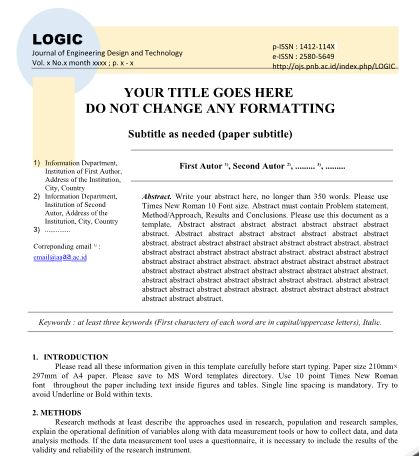The Effect of Current and Layer in Bimetallic Welding Using J4-AH36 Filler on Tensile Strength
Keywords:
TIG Welding, GTAW, Combined Filler, AH34 Steel, J4 Stainless Steel, Tensile Strength, LayerAbstract
If filler metal AH36 steel is used in bimetallic welding, it has the disadvantage of oxidation in the weld area. Also, the weld crack is encountered if filler metal J4 stainless steel is used in bimetallic welding. In this research, welding methods include the preparation of two types of base metal and a twisted combined filler of AH34 steel and J4 stainless steel as a filler rod applied. The welding of 5 mm thick bimetallic material uses the GTAW (Gas Tungsten Arc Welding) or TIG (Tungsten Inert Gas) process with a current electric welding 60 A, 70 A, and 80 A, one layer and two layers, and angle position 90o to 75o. Preparation of tensile test specimens, provision of shallow notches in the weld where the cross-sectional area of the same as the two-parent metals that have been welded together, tensile testing, and analysis of research data are conducted. The welding results using a current of 60 A with one layer showed a tensile strength of 402 MPa. However, welding with two layers decreased to 200 MPa with a difference of 50 % that means there is a significant difference. In the current of 70 A with one layer, the tensile strength is 433 MPa and with two layers, the value decreases very little at 426 MPa with a difference of 2 %, which means there is a minimal difference and makes the best current selection. For current 80 A with one layer produces tensile strength of 412 MPa. Yet, with two layers, the value decreases slightly to 380 MPa with a difference of 8 %, which means there is a relatively small difference.








